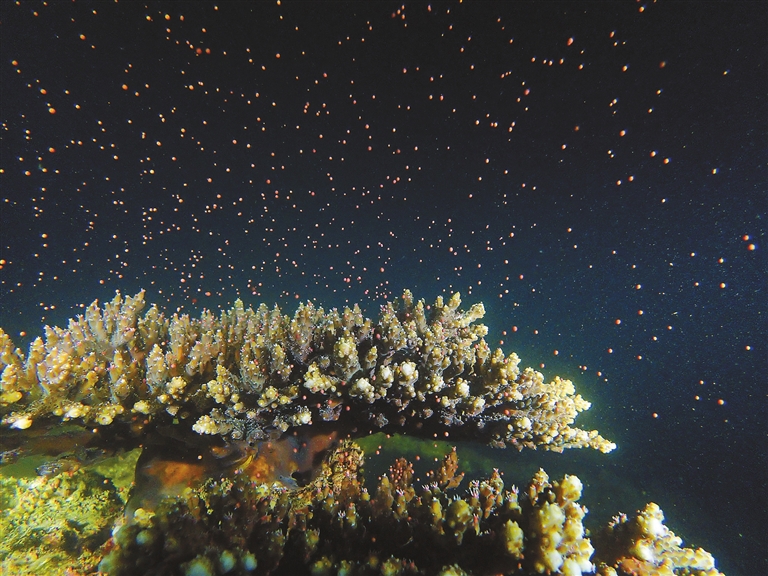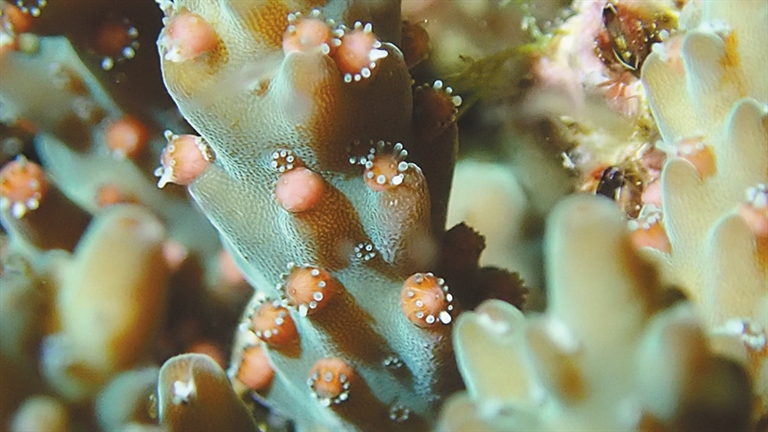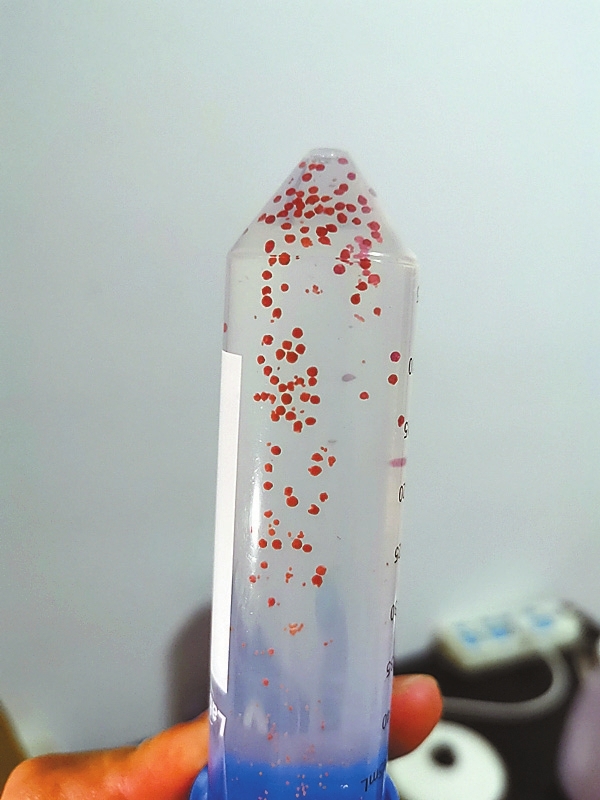


MEMBERS from “Dive for Love” Dapeng coral reservation volunteer foundation and researchers from Shenzhen Institute of Guangdong Ocean University recently discovered coral spawning in Da’ao Bay of Dapeng Bay, Shenzhen Economic Daily reported. It is said that corals normally release their tiny eggs and sperm, called gametes, around the full moon phase. However, the exact gamete-releasing time is hard to forecast because it is also related to other factors including water temperature, tides and Lunar gravity. In order to observe the phenomenon, volunteers decided to stay and wait at the area. At 9 p.m. on May 7, the first batch of volunteers entered the water. A volunteer named Huang Yu found several pink coral gametes in the water and took a picture. However, the volunteers did not see them at midnight of the same night. The next night, volunteers again went down to the water at 9 p.m. May 8 and 9, but unfortunately did not see coral spawning. Zhang Xintong, a volunteer, then contacted experts from South China Sea Institute of Oceanology, Chinese Academy of Sciences on May 10, and was advised to get down to the water at 8 p.m. Volunteers followed the suggestion and were able to see pink gametes stored in the corals, awaiting release. After waiting for 50 minutes, these gametes were released from the corals and the volunteers recorded the whole process. On May 11 and 12, researchers collected several samples from the water to study. This time, the spawning ended on the night of May 12, said experts. Most coral species are hermaphrodites, meaning they produce both sperm and eggs at the same time. When a coral egg and sperm join together as an embryo, they develop into a coral larva, called a planula. Only sperm and eggs drifting in water that are not from the same corals can be combined, according to the report. (Wang Jingli) | 
